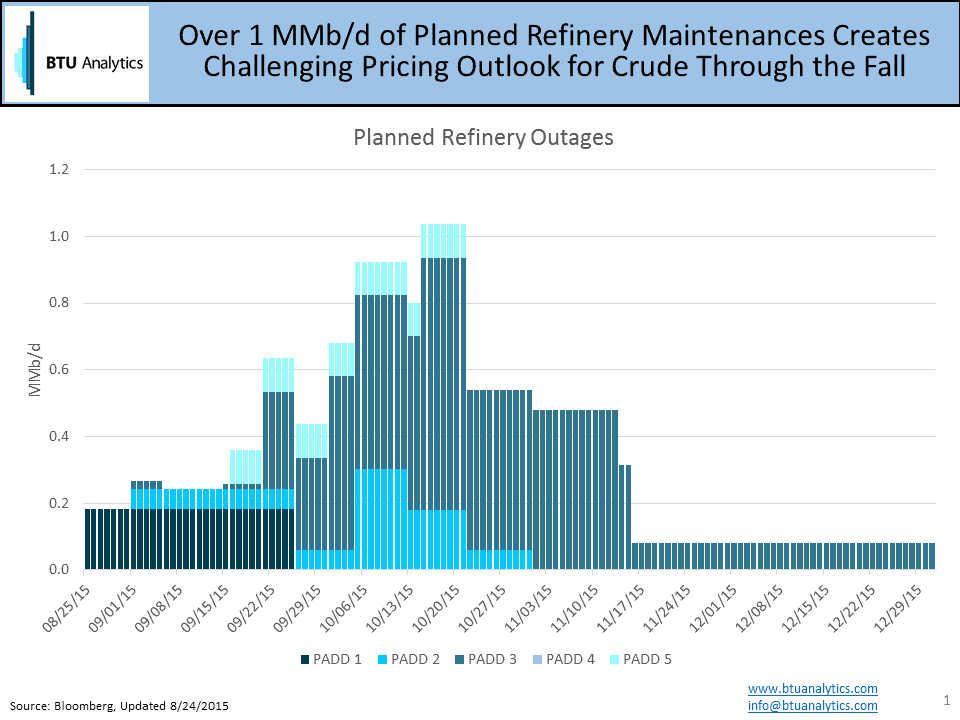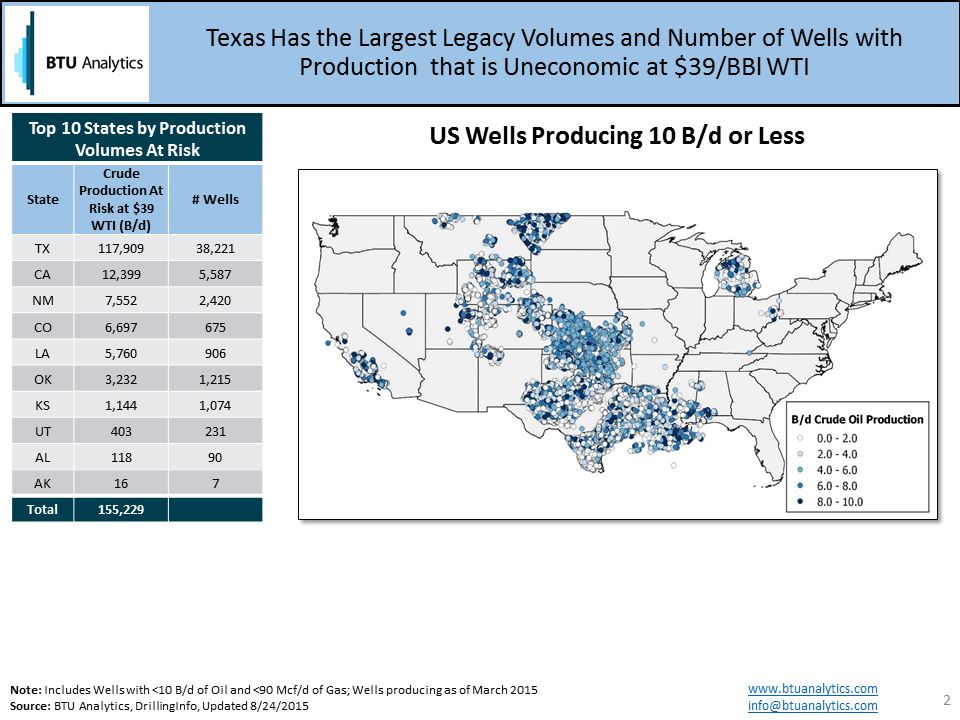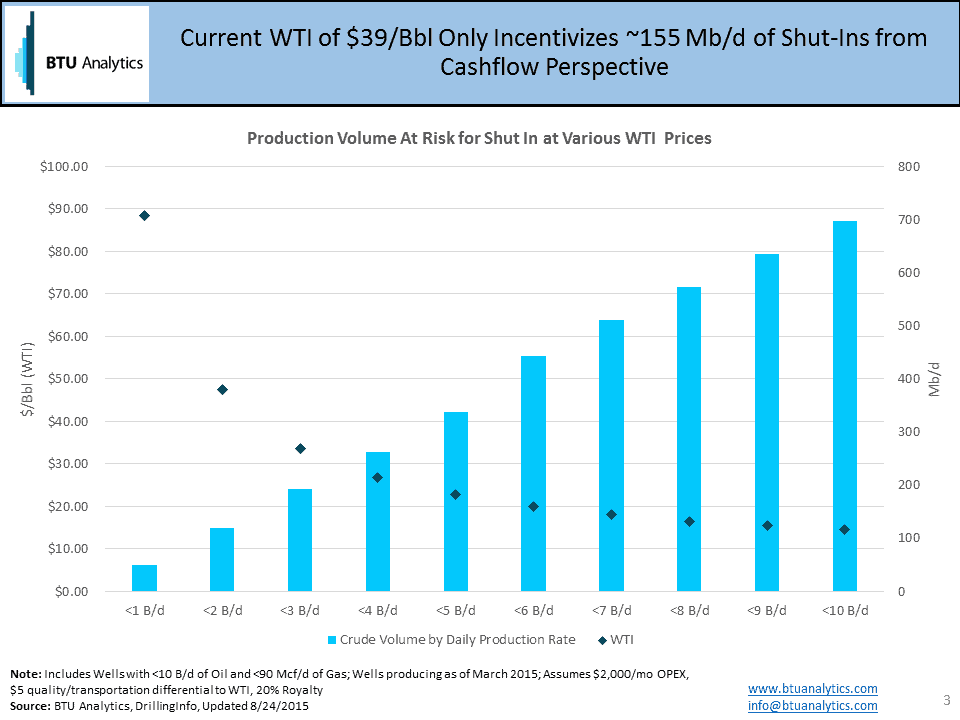With WTI closing below $40/bbl just before the refineries enter fall maintenance, one can’t help but ask, how much lower can prices go?
While the recent price plunge is correlated to broader market sentiment as well as unexpected refinery outages, US refineries are about to enter the fall maintenance season, and this has the potential to introduce more volatility into the markets. In the past few weeks, both BP Whiting and PBF Delaware City refineries have been forced to shut down due to leaks or fires. Eliminating almost 600 Mb/d of refining capacity available in the US market. While BP has indicated that the Whiting refinery was safely restarted today and would ramp up, the peak of fall maintenance is expected to be in mid-October and as much as 1.0 MMb/d is estimated to be under planned maintenance across the US. Throughout the summer, refineries have been running at historically high utilization rates, averaging 95% in both July and August. High utilization rates of the entire complex leaves little room to pick up slack as refineries enter maintenance, and while futures contracts have likely factored this into prices already, any hiccup in the system provides downside risk to spot crude oil prices.

This then begs the questions: How low can crude prices go? At what point does old legacy production become uneconomic? How much could be shut in and at what price?
Earlier this week, another energy research firm published their estimates of how much crude production might be at risk for shut-ins in the current environment. We decided to expand upon this analysis and look at various well production break points vs. operating costs and the location of the ‘at-risk’ production. By our calculations, wells that are currently producing 2.5 B/d or lower do not cover estimated operating expenses at $39/Bbl WTI. Most of these wells are located in Texas and contribute over 100 Mb/d of legacy production to the state.

The slide below shows the minimum volume vs. price threshold for legacy wells to cover their operating expenses. Wells producing an average of 10 B/d for a month require a sub-$15 WTI price compared to wells with a production rate of 3 B/d which require roughly $34/Bbl WTI.

So how much production comes from these wells? Is it enough that if they are shut in the market could re-balance? As of March, there were over 700,000 wells producing oil and gas in the US. Wells that produced less than 10 B/d of oil contributed 695 Mb/d of production and numbered approximately 498,000. There were 409,000 wells with less than 3 B/d of production which accounted for 192 Mb/d of crude volumes. This is a surprisingly small volume of production at risk for shut-ins at $34/Bbl (i.e. 3 B/d or less). At $39/Bbl WTI, wells with less than 2.5 B/d of production are cashflow negative and would imply a producer should shut in, removing 155 Mb/d or production from the market. However, producers may be reluctant to shut in wells for fear that prices may rise and and additional CapEx would be needed to bring the wells back online. Prices will likely have to be sustained for a prolonged period before we see significant oil shut-ins. This suggests that if refineries continue to have unexpected outages, paired with scheduled maintenance, WTI could still go lower in order to incentivize producers to shut in legacy production from very small wells and re-balance the market.








